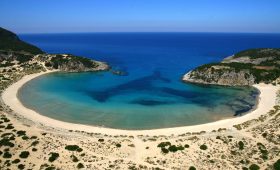Introduction to the Low-tide Walk
Located along the stunning coast of France, the Low-tide Walk offers a unique opportunity to explore the beauty of the sea and its surrounding landscapes. This phenomenon allows visitors to stroll along the sandy beaches and discover hidden treasures as the tide recedes, revealing a rich ecosystem teeming with life. Whether you’re a nature lover, a photography enthusiast, or simply looking for a peaceful escape, the Low-tide Walk is a destination that promises unforgettable experiences.
What Makes the Low-tide Walk Unique
The Low-tide Walk stands out for several reasons:
- Natural Beauty: The picturesque views during low tide provide a stunning backdrop, with the sun reflecting on the wet sand and tide pools.
- Wildlife Encounters: As the tide goes out, various marine life such as crabs, starfish, and colorful shells become visible, making it a haven for wildlife enthusiasts and photographers.
- Cultural Significance: The area is rich in history, with ancient coastal villages and historical landmarks dotting the landscape.
- Interactive Experience: Visitors can engage in activities such as shell collecting, bird watching, and even tide pooling.
Best Time to Visit
The Low-tide Walk can be enjoyed year-round, but certain times may enhance the experience:
- Spring (March to May): The weather begins to warm up, and the coastal flora starts to bloom, making it an excellent time for photography.
- Summer (June to August): The long days and warm temperatures draw larger crowds, but it is also when the tide pools are the most accessible.
- Autumn (September to November): The changing colors of fall provide a beautiful backdrop, and the crowds are thinner, allowing for a more tranquil experience.
- Winter (December to February): While colder, winter walks can offer solitude and the chance to see migratory birds along the coast.
How to Get There
Reaching the Low-tide Walk can vary depending on your starting point, but here are some general guidelines:
- By Air: The nearest major airport is Rennes–Saint-Jacques Airport, which is about an hour away by car. Alternatively, Dinard–Pleurtuit–Saint-Malo Airport can also be a good option.
- By Train: France has an extensive train network. You can take a train to Saint-Malo or Dinard, from where local transport can be arranged.
- By Car: Renting a car is highly recommended for flexibility. The coastal roads provide beautiful scenic views along the way.
Local Transportation
Once you arrive, there are several options for getting around:
- Walking: The best way to experience the Low-tide Walk is on foot. Designated paths lead you through the area, allowing for leisurely exploration.
- Bicycles: Cycling along the coast is popular. Many local shops offer rentals.
- Public Transport: Local buses connect various points of interest, but schedules can be limited, especially during off-peak seasons.
What to Bring for Your Walk
To make the most of your Low-tide Walk experience, here are some essentials to pack:
- Comfortable Footwear: Sturdy shoes or sandals that can handle wet and sandy conditions are a must.
- Water and Snacks: Staying hydrated and having a few snacks on hand will keep your energy up during the walk.
- Camera: Capture the stunning landscapes and wildlife encounters.
- Sun Protection: Sunscreen, hats, and sunglasses are essential, especially during sunny days.
- Binoculars: For bird watching and spotting distant wildlife.
Local Attractions and Activities
The Low-tide Walk is not just about the shoreline; there are plenty of nearby attractions and activities to enhance your visit:
1. Explore Coastal Villages
Take time to visit the charming coastal villages near the Low-tide Walk, such as:
- Saint-Malo: Known for its fortified walls and rich maritime history.
- Dinard: Famous for its beautiful beaches and elegant villas from the Belle Époque era.
2. Visit Historical Sites
History buffs will appreciate the nearby sites, including:
- Fort National: A historical fortification located just off the coast of Saint-Malo.
- Mont Saint-Michel: A UNESCO World Heritage site, this stunning island commune is a must-visit, accessible by a short drive.
3. Participate in Local Festivals
Depending on the time of your visit, you might enjoy local festivals celebrating the region’s culture, such as:
- La Route du Rock: A music festival held in Saint-Malo.
- Fête de la Mer: Celebrating maritime culture, this festival includes local seafood tastings and cultural exhibits.
Practical Travel Tips
To ensure a smooth and enjoyable visit to the Low-tide Walk, consider these practical tips:
- Check Tide Schedules: Knowing the tide timings will help you plan your walk effectively. Websites and local signs provide tide information.
- Arrive Early: To enjoy the serene atmosphere and avoid crowds, try to arrive early in the morning.
- Stay Safe: Always be aware of changing tide conditions. Avoid walking too far out into the tidal flats, and keep an eye on the water level.
Summary of Facts
- The Low-tide Walk is located along the coast of France.
- The best times to visit are spring, summer, autumn, and winter, each offering unique experiences.
- Accessible by air, train, or car, with local transportation options including walking and cycling.
- Essential items to bring include comfortable footwear, water, snacks, a camera, sun protection, and binoculars.
- Nearby attractions include coastal villages, historical sites, and local festivals.
- Checking tide schedules and arriving early are practical tips for a successful visit.
Conclusion
The Low-tide Walk in France is an enchanting destination that allows travelers to connect with nature, explore unique ecosystems, and immerse themselves in local culture. With its stunning landscapes, rich history, and abundant wildlife, this coastal experience is one that should not be missed. So, pack your bags, lace up those walking shoes, and get ready for an unforgettable adventure along the shores of France!



